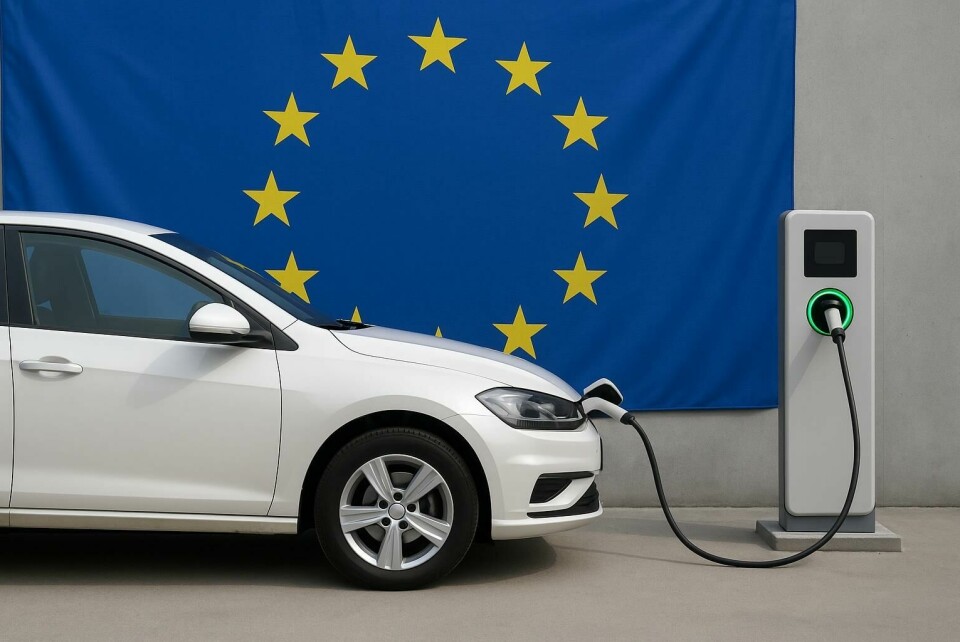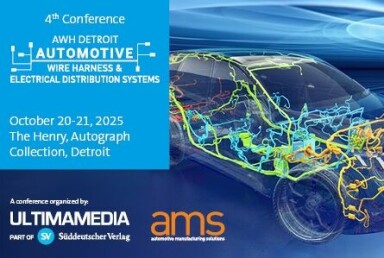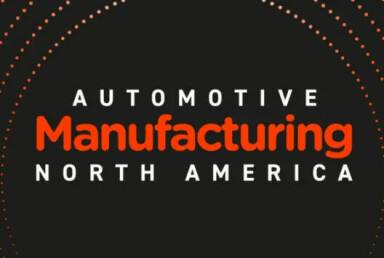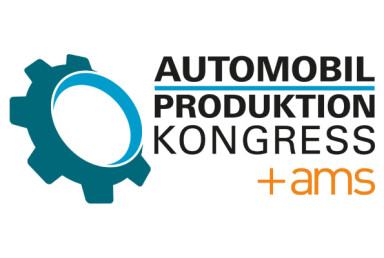China‑supply challenge
Europe’s EV industry faces china threat, recycling gaps and tariffs, warns SSAB
PARTNER CONTENT
This content was produced by Automotive Manufacturing Solutions in partnership with SSAB.
SSAB’s Erik Nymann warns Europe’s BEV industry must move faster to counter China’s battery dominance, US tariffs, and a widening gap in recycling and infrastructure warned that Europe’s electric vehicle industry faces mounting pressure from geopolitical shifts, battery imports, and weak recycling systems. Michael Nash reports.

Hosted in Stockholm, Sweden, the 2025 Swedish Steel Prize celebrates steel innovators, cutting-edge engineering, cooperation and sharing of knowledge. A packed agenda of presentations offered attendees the chance to delve deeper into a variety of key themes, including the future of the European automotive industry.
Erik Nymann, business innovation and market intelligence lead at SSAB, provided a topline insight into the current state of the European automotive industry and explored numerous challenges that are facing both carmakers and suppliers. He began by emphasising the role of the auto industry in the economy, putting the challenges into context.
“I want to highlight just how important the European automotive industry is to technology and also the economy of the entire continent,” he stated. “It comprises almost 7% of GDP in Europe, and employs around 30 million people. Automotive is a rapidly evolving sector, accounting for 30% of total patents in Europe. There is a considerable amount of movement happening right now, with 150 new EVs due to enter the market soon. So, just these facts alone highlight how big this industry is – it is almost too big to fail.”
BEVs and materials
The implications of the shift from internal combustion engine (ICE) vehicles to battery electric vehicles (BEVs) in Europe has been subject of discussion for years, as has the introduction of autonomous driving functionality. Nymann described a list of challenges within these trends, many of which will likely have a direct impact on Europe’s automotive industry over the next few years.
Battery production, for example, has been concentrated in China. Data from the International Energy Association (IEA) suggests that over 70% of the world’s EV batteries currently in circulation have been made in China, with CATL and BYD accounting for the lion’s share of production. Furthermore, China is the world’s largest processor of rare-earth elements, several of which are used in batteries for EVs.

“This is going to be a big challenge for the European automotive sector,” Nymann said. “We also see the decarbonisation of the whole value chain, with increasing emissions reduction targets across the entire sector, not just at a vehicle operation level. We also have this new act of recycling the vehicle coupled with traceability of materials, both of which will be important issues in Europe.”
Recycling in automotive initially started with plastics and fabrics, but there is now a push for companies like SSAB to ensure steel can be recycled at vehicle end-of-life. There are a host of difficult challenges involved, including copper contamination. Nymann suggested that there is enough supply of scrap vehicles to account for 40% of steel used in new vehicle production if all of the steel was successfully recovered. However, the figure currently stands at around 6%. SSAB Zero, which is commercially available today, is created using fossil-free energy and recycled steel, making it a sustainable alternative. Nymann is confident that demand for Zero will increase over the next few years in line with the growing need to recycle.
One of the most important trends within the rise of BEVs has been lightweighting, allowing carmakers to achieve longer ranges with their vehicles. Nymann expects an uptick in demand for high strength and ultra-high strength steels as OEMs make more BEVs.
“The BEV market push will continue the need for vehicle lightweighting, and as a result, we expect to see around a 6% increase for high strength steels,” he said. “Martensitic steels are a suitable solution due to their high strength, low cost and sustainability – steel is better suited for recycling when compared to aluminium. And we still have an advantage over aluminium because the raw cost of the material is still much lower.”
Trump’s tariffs and China’s surge
The Swedish Steel Prize was held against a particularly turbulent backdrop, with Trump announcing sweeping tariffs that would hit the global economy hard. Europe was not exempt, and with the automotive industry reliant on imports and exports to and from the US, the long-term implications of these tariffs could be enormous.
“We must consider geopolitics and trade,” Nymann noted. “The recent tariffs in the US could push the export-heavy industries, like European automotive, into really tough times. Furthermore, there is growing competition coming from China, with Chinese carmakers gaining market share in the BEV segment in Europe. We see this trend increasing in the future too, and it could leave European carmakers in a very difficult position.”
At the moment, Chinese OEMs are manufacturing their vehicles in China before exporting them to Europe. However, numerous companies have already announced plans to build plants in Europe. BYD, for example, is constructing plants in Hungary and Turkey, and is considering a third in Germany.
Nymann also listed on-going supply chain issues that can be traced back to the COVID 19 pandemic and Russia’s war in Ukraine, such as the semiconductor shortage. This is still yet to be fully solved, he warned, and could continue having an impact on Europe’s automotive sector.
All of these challenges require careful consideration from all parties involved in automotive across Europe, from carmakers to government officials. Nymann believes that there should be an exploration into how European companies can react more swiftly to global events, and that safeguarding production and business operations is necessary to ensure Europe’s economy is not as vulnerable to unpredictable issues.
Building infrastructure
Alongside growth in BEV production and sales, Nymann expressed the need for expansion of Europe’s charging infrastructure. “We are quite spoiled here in the nordics, but the rest of Europe needs to catch up,” he emphasised. “There are many regions where the infrastructure is lacking, and it will require a huge investment to build.”
It is clear that there are many challenges facing Europe’s automotive industry, Nymann concluded. However, he is confident that, with the right innovation, nurturing of talent and collaborative partnerships, European carmakers can retain a strong position in the automotive industry.


